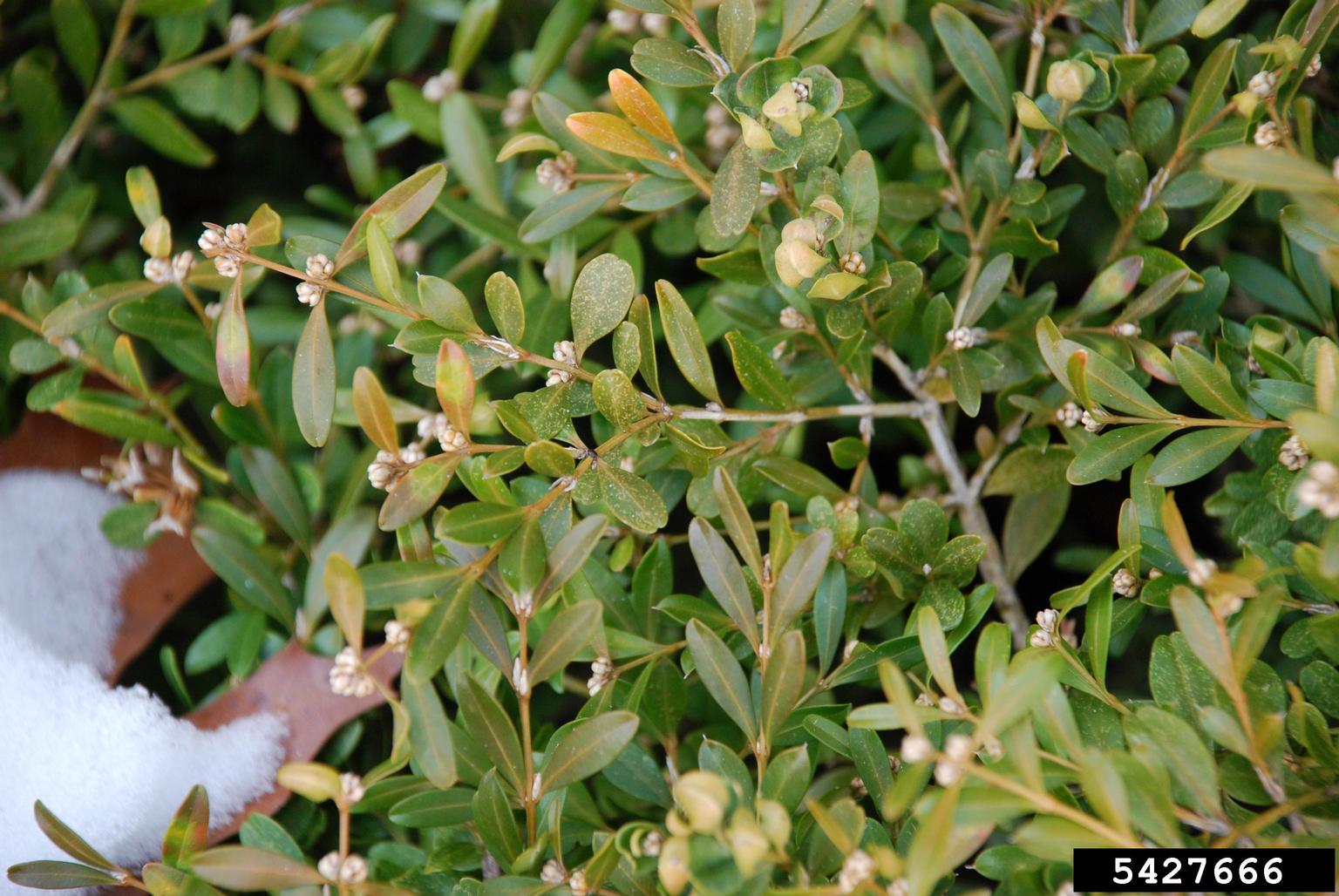Boxwood Mite Control: What Are Boxwood Bud Mites


Boxwood (Buxus spp.) is a popular shrub in gardens and landscapes around the country. However, the shrub can be the host to boxwood mites, Eurytetranychus buxi: spider mites so tiny that the insects are difficult to see with the naked eye. If you are planting new boxwoods, consider varieties that are mite resistant. For example, Japanese boxwood is less susceptible to boxwood spider mites than European and American varieties. If your beloved boxwoods are already infested, read on for tips on boxwood mite damage and boxwood mite control.
What are Boxwood Bud Mites?
What are boxwood bud mites? They are tiny insects that eat away on the bottom of boxwood leaves. Even with a hand lens, you may have trouble seeing these pests. You’ll see the boxwood mite damage easily enough, however. Leaves that are infected with boxwood spider mites look like they have been pricked by pins, and they may be spotted with very small yellow or white “freckles.” Severe infestations may lead to defoliation of the plants.
Boxwood Mite Control
As is often true in the garden, prevention is easier than cure when it comes to boxwood spider mites. One factor in mite infestation is the application of high nitrogen fertilizer, so avoiding this pitfall is a good first step. In order to understand boxwood mite control, you need to understand the life cycle of the insect pest. Boxwood spider mites lay round, greenish eggs on the underside of the foliage, and the eggs overwinter there. They hatch out in May and grow up fast, laying eggs themselves in a couple of weeks. The fact that many generations are born every growing summer means that you have to start boxwood mite control early. This mite is most active in spring and early summer, so that’s the time to start treatment for boxwood bud mites. Treatment for boxwood bud mites ranges from organic to chemical. Start with water. Using a fast stream of water from the hose, wash mites from the boxwood foliage. If this approach isn’t working, you can spray the foliage in summer with horticultural oil. As a last resort, treat the boxwood spider mites with abamectin (Avid), bifenthrin (Talstar), malathion, or oxythioquinox (Morestan) in early May.
Sign up for the Gardening Know How newsletter today and receive a free copy of our e-book "How to Grow Delicious Tomatoes".

Teo Spengler is a master gardener and a docent at the San Francisco Botanical Garden, where she hosts public tours. She has studied horticulture and written about nature, trees, plants, and gardening for more than two decades, following a career as an attorney and legal writer. Her extended family includes some 30 houseplants and hundreds of outdoor plants, including 250 trees, which are her main passion. Spengler currently splits her life between San Francisco and the French Basque Country, though she was raised in Alaska, giving her experience of gardening in a range of climates.